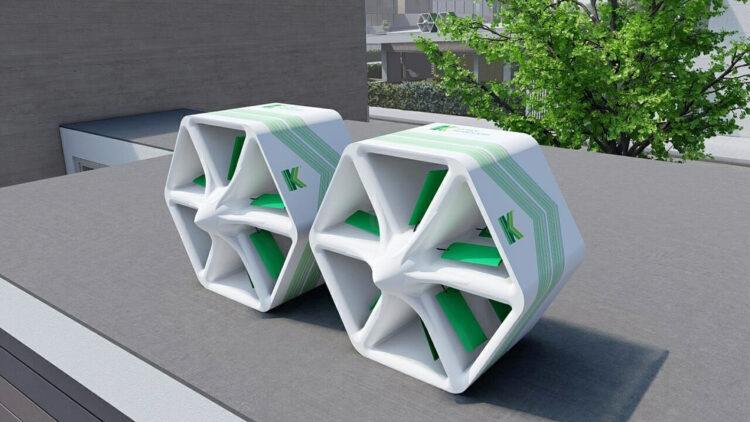In a bid to completely revolutionize urban energy generation, a Scottish startup has unveiled a groundbreaking energy solution. Their innovative Wind Panel turbines, shaped like honeycombs, are designed for low-profile installation atop buildings or integration into existing structures. By harnessing the wind through oscillating aerofoils, these futuristic turbines offer a fresh approach to generating clean energy, all while minimizing land use.
Wind Panel: Transforming urban energy landscape with honeycomb-shaped turbines
Katrick Technologies, located in Glasgow, is making significant strides in the renewable energy field with its cutting-edge Wind Panel design, developed in partnership with the Cleveland, Ohio-based research organization, Manufacturing Technology Centre.
Unlike traditional wind turbines that require extensive land and maintenance, Wind Panels are tailored for urban environments with variable wind conditions, benefiting from a larger surface area and density of their honeycomb shape. Utilizing oscillating aerofoils that sweep the entire duct, they harness energy from low-level turbulent winds and quickly adapt to speed changes. Each wind panel comprises multiple channeling ducts, containing independently functioning aerofoils that convert kinetic energy into mechanical oscillations. These oscillations are then transformed into electricity that’s available all around the clock.
The first testing phase at the University of Strathclyde yielded encouraging results. The Wind Panels achieved an average power output of 41.1 watts at wind speeds of 22 miles per hour, exceeding initial expectations and demonstrating their efficacy in varying environments.
Looking ahead, Katrick Technologies is planning to conduct two more testing phases focused on refining these turbines and verifying its performance under real-world conditions, solidifying its potential impact on renewable energy solutions.
The ecological and economic benefits of these Wind Panel turbines are immense
The Wind Panel turbine offers several advantages that should not be overlooked. It boasts a low levelized cost of electricity of up to 15 cents per kilowatt hour, which varies based on wind energy availability. With a rating of one kilowatt, it can reduce carbon emissions by over 0.5 tons of carbon dioxide annually, making it an eco-friendly choice for energy generation.
Its affordable, compact design allows for mass production and easy installation in existing structures within densely populated urban environments. This is particularly valuable for cities facing critical energy demands amid limited space.
These turbines excel in generating power even at lower wind speeds, making them highly efficient across a range of conditions. This adaptability ensures a consistent, uninterrupted energy source in various climates.
Moreover, the bladeless design of the Wind Panel improves safety for local wildlife. For instance, by reducing the risk to birds, this turbine supports biodiversity while providing a cleaner energy alternative to traditional turbines.
The future of Wind Panel: Balancing the benefits and challenges
Despite innovations such as Katrick Technologies’ Wind Panels, skepticism surrounds bladeless turbine technology. Critics argue that, while these options may be greener, their energy generation capabilities are lesser compared to that of traditional turbines. Combined with a preference for conventional turbine designs, this may deter investors and energy developers from embracing these unproven models.
Practical challenges also remain, including the high initial investment and the infrastructure needed to support Wind Panels. Potential owners may hesitate due to concerns about the turbine’s real-world effectiveness and the substantial commitments involved in adopting new energy systems.
As the demand for cleaner energy alternatives grows, the long-term sustainability of bladeless turbines is coming under closer scrutiny. As such, further validation of their efficiency and cost-effectiveness is needed.
Nonetheless, Katrick Technologies’ Wind Panels represent a step in the right direction. By integrating these turbines into urban landscapes, it promises to redefine wind energy capture. Indeed, their potential offers hope for a more sustainable future.

